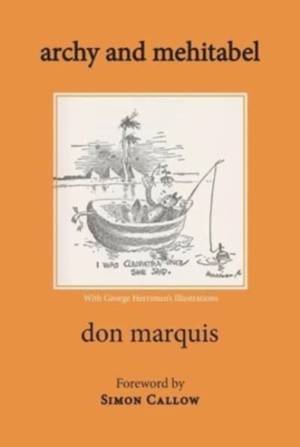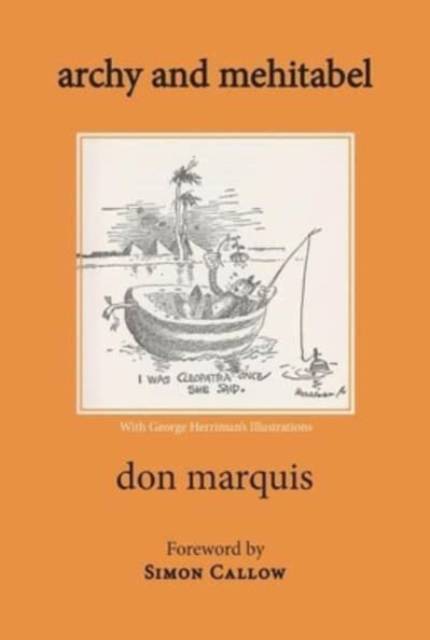
- Afhalen na 1 uur in een winkel met voorraad
- Gratis thuislevering in België vanaf € 30
- Ruim aanbod met 7 miljoen producten
- Afhalen na 1 uur in een winkel met voorraad
- Gratis thuislevering in België vanaf € 30
- Ruim aanbod met 7 miljoen producten
Zoeken
Omschrijving
archy and mehitabel is a collection of humorous verses by Don Marquis, originally published from 1916 onwards in Marquis's newspaper columns 'The Sun Dial' in the New York Evening Sun and 'The Lantern' in the New York Herald Tribune and first published in book form in 1927.
The stories centre on archy, a philosopher cockroach who types messages to the author in lowercase letters (he is unable to use the typewriter's shift key), and mehitabel, a free-spirited alley-cat whose motto is "Toujours gai."
archy and mehitabel contains free-verse poems on a variety of archy's concerns, such as the transmigration of souls, social injustice, life in New York City, and death. archy claims to have been a poet in another existence. mehitabel claims to be a reincarnation of Cleopatra, but now her wild adventures result only in litters of kittens.
The book has become a cult classic over the years and has never been out of print. Galileo is delighted to publish a new edition.
The illustrations are by George Herriman (1880-1944), the originator of the legendary Krazy Kat cartoon strip, and a huge influence on many cartoonists who followed him, particularly the 1960's Robert Crumb.
The stories centre on archy, a philosopher cockroach who types messages to the author in lowercase letters (he is unable to use the typewriter's shift key), and mehitabel, a free-spirited alley-cat whose motto is "Toujours gai."
archy and mehitabel contains free-verse poems on a variety of archy's concerns, such as the transmigration of souls, social injustice, life in New York City, and death. archy claims to have been a poet in another existence. mehitabel claims to be a reincarnation of Cleopatra, but now her wild adventures result only in litters of kittens.
The book has become a cult classic over the years and has never been out of print. Galileo is delighted to publish a new edition.
The illustrations are by George Herriman (1880-1944), the originator of the legendary Krazy Kat cartoon strip, and a huge influence on many cartoonists who followed him, particularly the 1960's Robert Crumb.
Specificaties
Betrokkenen
- Auteur(s):
- Uitgeverij:
Inhoud
- Aantal bladzijden:
- 177
- Taal:
- Engels
Eigenschappen
- Productcode (EAN):
- 9781915530011
- Verschijningsdatum:
- 1/09/2023
- Uitvoering:
- Hardcover
- Formaat:
- Genaaid
- Afmetingen:
- 132 mm x 201 mm
- Gewicht:
- 362 g

Alleen bij Standaard Boekhandel
+ 41 punten op je klantenkaart van Standaard Boekhandel
Beoordelingen
We publiceren alleen reviews die voldoen aan de voorwaarden voor reviews. Bekijk onze voorwaarden voor reviews.








